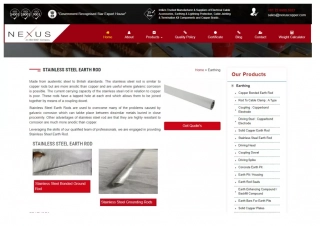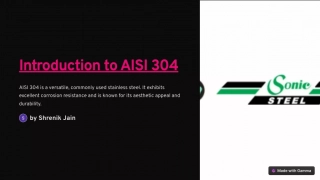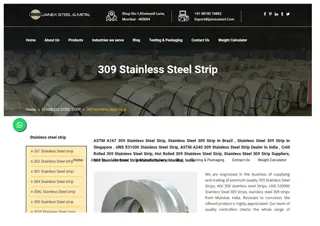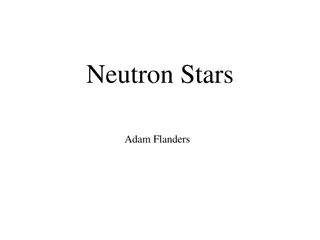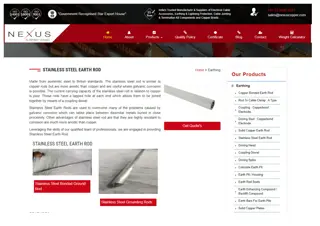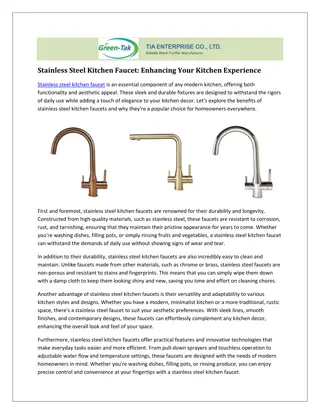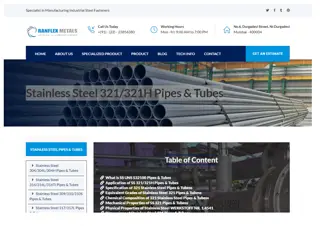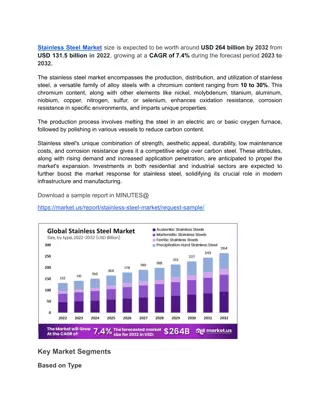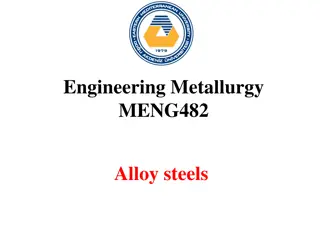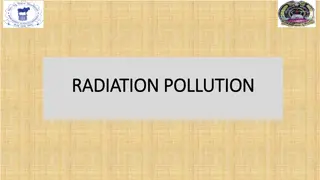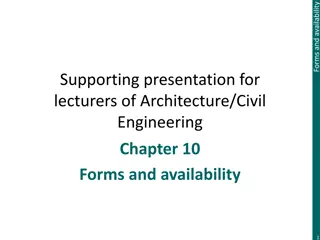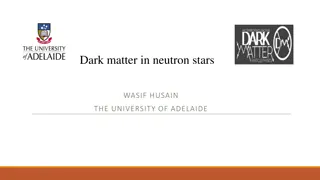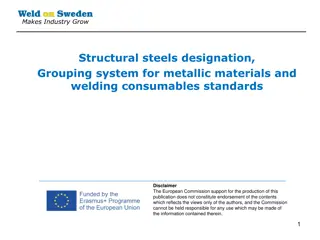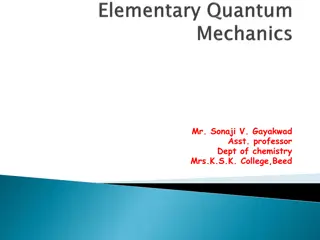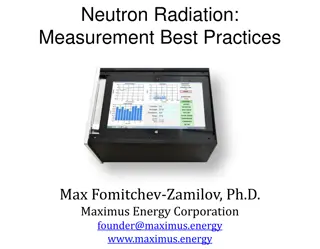High-Temperature Radiation Embrittlement of Neutron-Irradiated Austenitic Stainless Steels
The study investigates the high-temperature radiation embrittlement (HTRE) of neutron-irradiated austenitic stainless steels 18Cr-10Ni-Ti, EI-847, EP-172, and ChS-68. The impact of chemical composition, cold work, and irradiation temperature on short-term mechanical properties was examined. Experimental results from cylindrical samples irradiated in the BN-350 fast reactor reveal insights into the embrittlement behavior of these materials under neutron irradiation. The findings provide valuable information for understanding and mitigating HTRE in austenitic steels used in fast reactors.
Download Presentation

Please find below an Image/Link to download the presentation.
The content on the website is provided AS IS for your information and personal use only. It may not be sold, licensed, or shared on other websites without obtaining consent from the author.If you encounter any issues during the download, it is possible that the publisher has removed the file from their server.
You are allowed to download the files provided on this website for personal or commercial use, subject to the condition that they are used lawfully. All files are the property of their respective owners.
The content on the website is provided AS IS for your information and personal use only. It may not be sold, licensed, or shared on other websites without obtaining consent from the author.
E N D
Presentation Transcript
State Scientific Center of the Russian Federation Institute for Physics and Power Engineering (SSC RF - IPPE) HIGH-TEMPERATURE RADIATION EMBRITTLEMENT OF NEUTRON IRRADIATED AUSTENITIC STAINLESS STEELS 18Cr-10Ni-Ti, EI-847, EP-172 AND ChS-68 Porollo S.I., Ivanov A.A., Konobeev Yu.V., Shulepin S.V. 11th conference on Reactor Materials Science, May 27 31, 2019, Dimitrovgrad, Russia 1
INTRODUCTION their use in the core of fast reactors, is their high swelling under neutron irradiation. At the same time, it is known that in austenitic steels and high- nickel alloys a significant deterioration mechanical properties occurs under neutron irradiation so-called high- temperature radiation embrittlement (HTRE). . At high fuel burn-ups the HTRE may seriously limit the performance of austenitic steels at high temperatures and to be so important as the void swelling. To reduce the void swelling in austenitic steels, the cold work is successfully used, as well as some solute additions. The effect of these factors on the predisposition of these materials to high-temperature radiation embrittlement has not been studied yet enough. This report presents the results of studying the influence of chemical composition, cold work and irradiation temperature on the short-term mechanical properties of austenitic stainless steels 0.08C-18Cr-10Ni-Ti, EI- 847, EP-172 and ChS-68 irradiated in the BN-350 fast reactor to doses of 57 59 dpa at temperatures in the range of 400 500 . For comparison, the ferritic-martensitic steel EP-450 irradiated under the same conditions was studied too. The main disadvantage of austenitic stainless steels, which limits of short-term and long-term
Experimental The study of short-term mechanical tensile properties was carried out using cylindrical samples of 15 mm in length and of 3 mm in gauge part diameter. The samples were fabricated from commercial austenitic steels 0.08C-18Cr-10Ni-Ti, 0.08C-16Cr-15Ni-3Mo-Nb (EI-847), 0.08C-16Cr-15Ni- 3Mo-Nb-B (EP-172), 0.08C-16Cr-15Ni-2Mo-Ti-V-B (ChS-68) and the ferritic- martensitic steel 13Cr-2Mo-Nb-V-B (EP-450) , % . Cr Ni comme rcial 08 18 10 C Si Mn S P Mo Nb Ti V B N2 - 0,07 0,31 1,41 0,006 0,026 17,48 9,57 - - 0,57 - - 0,06 0,18 0,53 0,007 0,013 16,16 14,75 2,95 0,54 - - - 0,025 -847 0,08 0,15 0,26 0,007 0,007 15,70 14,90 2,83 0,77 - - 0,010 0,04 -172 0,066 0,44 1,36 0,004 0,010 15,15 14,7 2,45 - 0,37 - 0,0045 0,010 -68 0,14 0,20 0,31 0,009 0,017 12,95 0,20 1,54 0,47 - 0,22 0,004 - -450 3
The samples were irradiated in two experimental assemblies of the BN-350 reactor for 9430 hours. During the irradiation the samples were in flowing sodium. The irradiation temperature of the samples was 390 410 C for the first assembly and 480 490 C for the second one. The neutron fluence in the steels 0.08C-18Cr-10Ni-Ti and EI-847 was 1.28 x 1023n /cm2 (E> 0.1 MeV), and for the steels EP-172, ChS-68 and EP-450 1.32 x 1023 n/cm2 (E> 0.1 MeV), that corresponds to doses of 57 and 59 dpa, respectively. The mechanical properties of irradiated steels were determined using a remote tensile testing machine 1689P-1 at the active grip movement speed of 1 mm / min. Tests were carried out at temperatures in the range of 20 750 C. At each temperature, two-three samples were tested. The warm- up time of the samples at a test temperature was 20 min. 4
Results The temperature dependence of the ultimate strength in the steels: 0.08C-18Cr-10Ni-Ti (a), EI- 847 (b), EP-172 (c) and ChS-68 (d). Open symbols initial state, solid symbols after irradiation at 400 . austenized, 20% cold worked 5
Results The temperature dependence of the total elongation in the steels: 0.08C-18Cr-10Ni-Ti (a), EI-847 (b), EP-172 (c) and ChS-68 (d). Open symbols initial state, solid symbols after irradiation at 400 . austenized, 20% cold worked. 6
Results The temperature dependence of the ultimate strength ( ) and the total elongation (b) in the ferritic-martensitic steel EP-450. Open symbols before irradiation, solid symbols after irradiation at 400 . 7
Results The temperature dependence of the total elongation in steels 0.08C-18Cr-10Ni-Ti (a), EI- 847 (b), EP-172 (c) and ChS-68 (d). Open symbols after irradiation at 490 , solid symbols after irradiation at 400 . austenized, 20% cold worked. 8
Summary Conducted studies of short-term mechanical properties of austenitic steels 0.08C-18Cr-10Ni-Ti, 0.08C-16Cr-15Ni-3Mo-Nb 0.08C-16Cr-15Ni-3Mo-Nb-B (EP-172), 0.08C-16Cr-15Ni-2Mo-Ti-V-B (ChS-68) and the ferritic-martensitic steel 13Cr-2Mo-Nb-V-B (EP- 450) before and after irradiation temperatures of 410 and 490 to the doses of 57 and 59 dpa have showed that the austenitic steels are subjected to the high- temperature radiation embrittlement (HTRE). At the same irradiation and test conditions the ferritic-martensitic steel EP-450 does not show any signs of HTRE. (EI-847), in the reactor BN-350 at Most strong HTRE is observed in the steel 18Cr-10Ni-Ti, and less in EI-847. The steels EP-172 and ChS-68 HTRE. In the cold-worked steel ChS-68 the HTRE is absent under given irradiation and test conditions are less susceptible to 9
Summary After neutron irradiation the ultimate strengths of the investigated steels in austenitized and cold-worked states almost coincide. As for ductility, a difference is observed only for the steel ChS-68, the ductility of which in cold-worked state at test temperatures above 600 is noticeably higher than in the austenized state. An increase of the irradiation temperature noticeably affects only the high-temperature mechanical properties of 18Cr-10Ni-Ti and EI-847 steels: the onset of HTRE shifted to lower temperatures. For the steels EP-172 and ChS-68 a clear conclusion about the effect of irradiation temperature on high-temperature plasticity cannot be made 10


